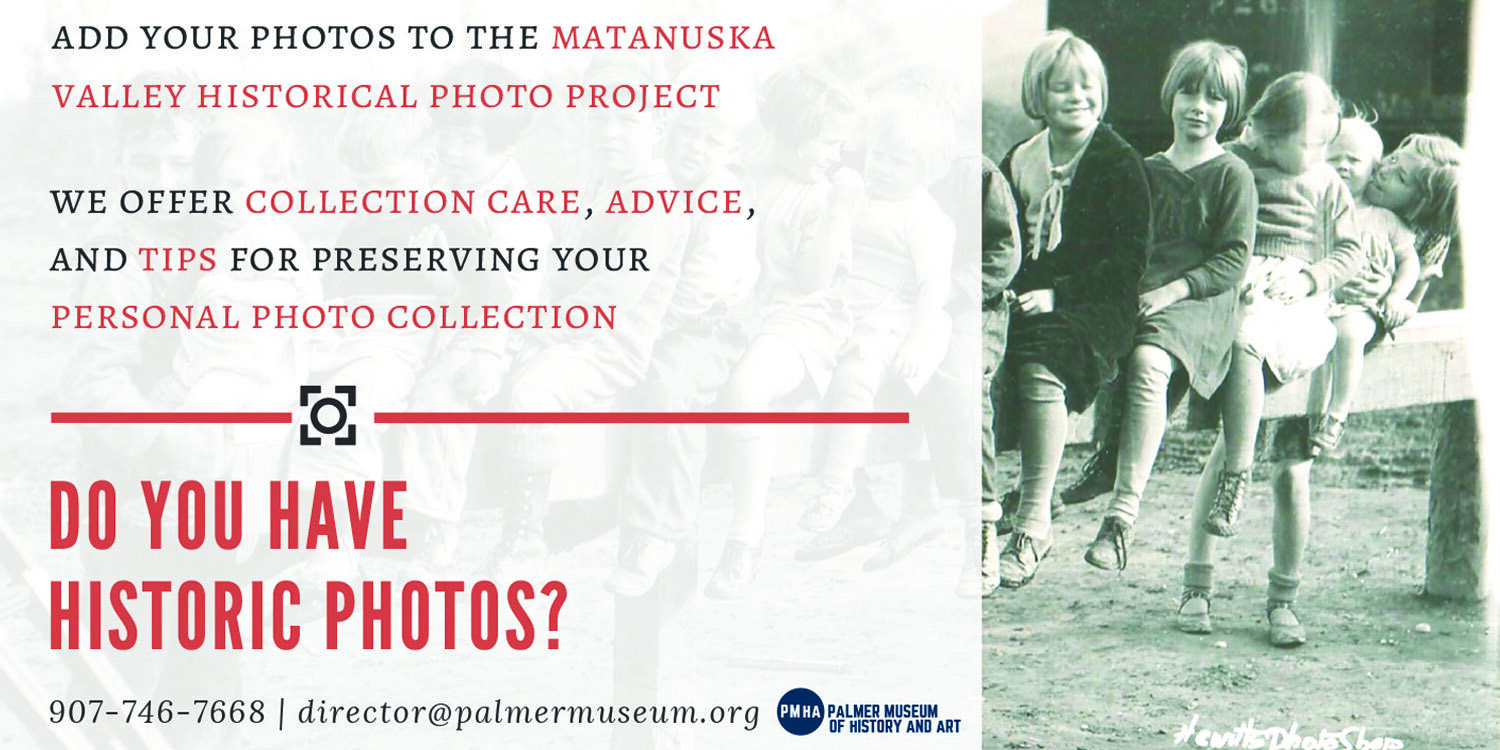Contributed by Richard Estelle, Palmer Museum of History & Art
Prior to introduction of diesel engines on the Alaska Railroad in 1944, the trip between Seward and Fairbanks took two days, with an overnight layover midway at the community of Curry. A creamery was established there to supply dairy products to the Curry Hotel serving overnighting passengers and tourist guests. Creamery products included ice cream, buttermilk, cottage cheese and butter. The creamery also supplied railroad dining cars, the Anchorage railroad hospital and other merchants along the railway.
It is at the Curry Creamery that we find a first record of our butter churn, where 1,434 pounds of butter are reported to have been produced in July and August of 1932. From there, presumably along with other machinery of the Curry Creamery, the churn was later moved to the Agricultural Experiment Station at Matanuska to be closer to the Matanuska Valley farms, which were the creamery’s major source of cream.
When the Matanuska Colony Resettlement Project came to the Valley in 1935, a creamery was established at Palmer as part of the government-sponsored effort to both support local dairy farmers and to supply needed dairy products to the growing population. The creamery, a significant part of the Matanuska Valley Farmers Co-op, marketed its variety of products under the name, Matanuska Maid. This butter churn was obtained from the Experiment Station and became the Co-op’s first piece of creamery equipment, converting locally-produced cream to butter with it from 1936 until 1943.
The churn was powered by a drive belt fitted over the large metal wheel that turned gears in the enclosed gear box at the right side of the wooden drum. The drive belt itself would have been powered by a pulley on a large electric motor directly behind the churn, or from a live spindle driving belts to several machines at one time. The heavy cast iron frame, which would have been bolted to the floor, was necessary to keep the machine stable while the drum rotated. A clutch handle is mounted next to the wheel to engage and disengage the turning action, and a gear release lever on the gearbox allowed the drum to turn free, so the door could be turned by hand around to the front for access. Wooden baffles inside the drum insured constant churning action of the enclosed cream as the drum turned.
The drum measures 28 inches wide and 28 inches in diameter which could hold around 70 gallons of cream if full. It likely was not completely filled, however, to allow room for good churning activity. The amount of butter produced from the contents depended on the percentage of butter fat contained in the cream. A small round glass window is built into the left end of the drum, the function of which is not yet clear. We hope to find someone who worked with the churn to learn more about how it was actually used.
When Matanuska Maid Dairy ceased operation in 2007, the State of Alaska took over its assets and the butter churn was placed on display in the Division of Agriculture office in Palmer for several years. It was moved to the Palmer Museum of History & Art to be added to our collection in August 2017.

















































